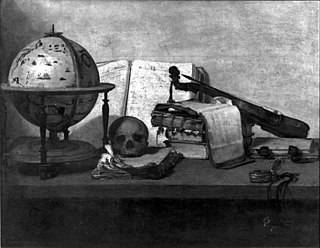 W
WThe 1972 Montreal Museum of Fine Arts robbery, sometimes called the Skylight Caper, took place very early in the morning of September 4 of that year. Three armed robbers used a skylight under repair to gain entry to the museum from its roof, tied up the three guards on duty, and left on foot with 18 paintings, including a rare Rembrandt landscape and works by Jan Brueghel the Elder, Corot, Delacroix, Rubens, and Thomas Gainsborough, as well as some figurines and jewellery. One of the Brueghels was returned by the thieves as an initiative to start ransom negotiations. None of the other paintings has ever been recovered and the robbers have never been arrested or even publicly identified, although there is at least one informal suspect.
 W
WIn July 1993, a total of 304 items were stolen from the National Art Museum of Azerbaijan in Baku. They included 274 artworks and 30 medieval miniatures. The most valuable of them was Women's Bathhouse by Albrecht Dürer, valued at about $10 million. Other stolen artworks were made by Rembrandt, Anthony van Dyck, Nicolas Poussin, Jacob van Ruisdael and Jean-François Millet, among others. The artworks had been smuggled and later recovered from the United States. In 2001, twelve artworks were returned to their previous place of display, the Kunsthalle Bremen in Germany, while the rest was returned to Azerbaijan.
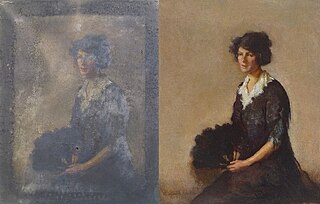 W
WAccidental damage of art refers to damage or destruction of an artwork as a result of various types of accidents. Damage accidents sometimes occur during exhibition or transportation. Attempts at restoration have also damaged artworks, either by expert restorers using techniques that are found decades later to be unsuitable or harmful, or simple botches by unskilled people.
 W
WThe confiscation of Armenian properties by the Ottoman and Turkish governments involved seizure of the assets, properties and land of the country's Armenian community. Starting with the Hamidian massacres in the mid-1890s and peaking during the Armenian Genocide, the confiscation of the Armenian property lasted continuously until 1974. Much of the confiscations during the Armenian Genocide were made after the Armenians were deported into the Syrian Desert with the government declaring their goods and assets left behind as "abandoned". Virtually all properties owned by Armenians living in their ancestral homeland in Western Armenia were confiscated and later distributed among the local Muslim population.
 W
WHans-Joachim Bohlmann was a German serial vandal who primarily targeted artworks at public exhibitions. Between 1977 and 2006, he damaged over 50 paintings worth more than 270 million Deutsche Marks by such artists as Rubens, Rembrandt and Dürer.
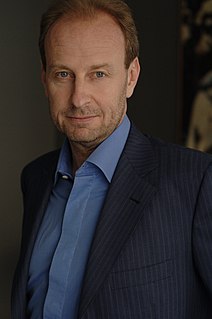 W
WThe Bouvier Affair was a number of international lawsuits that started in 2015, and subsequent events. The lawsuits allege that Swiss art shipper and dealer Yves Bouvier defrauded his clients by misrepresenting the original cost of art works and subsequently overcharging them. The affair has played out in courts in Monaco, Switzerland, France, the US, Hong Kong and Singapore.
 W
WThe Carabinieri Command for the Protection of Cultural Heritage, better known as the Carabinieri T.P.C., is the branch of the Italian Carabinieri responsible for combatting art and antiquities crimes.
 W
WEdouard Léon Cortès (1882–1969) was a French post-impressionist artist of French and Spanish ancestry. He is known as "Le Poète Parisien de la Peinture" or "the Parisian Poet of Painting" because of his diverse Paris cityscapes in a variety of weather and night settings.
 W
WZhang Dinghuang, also known as Zhang Fengju was born in Nanchang. He was an author, literary critic, translator, and expert in antique manuscripts (古迹文物). Zhang was a supporting but key figure of the rich 20th century Chinese literary movements.
 W
WThe Eberswalde Hoard or Treasure of Eberswalde is a Bronze Age hoard of 81 gold objects with a total weight of 2.59 kg (83 ozt). The largest prehistoric assembly of gold objects ever found in Germany, it is considered to be one of the most important finds from the Central European Bronze Age. Today, it is in Russia, as part of the group of artifacts and works of art looted from Germany at the end of the Second World War.
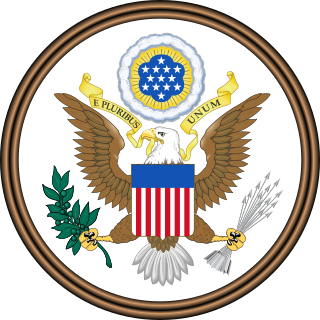 W
WThe Foreign Cultural Exchange Jurisdictional Immunity Clarification Act is a bill that was introduced into the United States House of Representatives during the 113th United States Congress. Under current law, works of art loaned by foreign governments generally are immune to certain decisions made by federal courts and cannot be confiscated if the President, or the President’s designee, determines that display of the works is in the national interest. However, commercial activity in which foreign governments are engaged does not have immunity in federal courts. H.R. 4292 would clarify that importing works of art into the United States for temporary display is not a commercial activity, and thus that such works would be immune from seizure.
 W
WThe Foundation E.G. Bührle Collection is an art museum in Zürich, Switzerland. It was established by the Bührle family to make Emil Georg Bührle's collection of European sculptures and paintings available to the public. The museum is in a villa adjoining Bührle's former home.
 W
WThree famous paintings were stolen from the Kunsthalle Schirn in Frankfurt in 1994. Two thieves and a dealer were caught and sentenced to prison, but the people who had ordered the theft were never brought to justice. This case of art theft is unique in that the paintings were recovered by buying them back from the people behind the theft, resulting in a heavy profit for the Tate Gallery, owner of two of the paintings.
 W
WOtto Gerstenberg was a German entrepreneur, mathematician and an early 20th-century Berlin art collector.
 W
WHermann Wilhelm Göring was a German political and military leader and a convicted war criminal. He was one of the most powerful figures in the Nazi Party, which ruled Germany from 1933 to 1945.
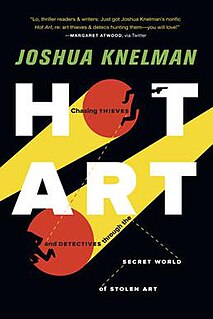 W
WHot Art: Chasing Thieves and Detectives through the Secret World of Stolen Art is a non-fiction book, written by Canadian writer Joshua Knelman, first published in September 2011 by Douglas & McIntyre. In the book, the author chronicles his four-year investigation into the world of international art theft. Knelman traveled from Cairo to New York City, London, Montreal, and Los Angeles compiling his book; which has been called "A major work of investigative journalism", and "a globetrotting mystery filled with cunning and eccentric characters."
 W
WOn March 18, 1990, 13 works of art were stolen from the Isabella Stewart Gardner Museum in Boston in the early hours. Guards admitted two men posing as police officers responding to a disturbance call, and the thieves tied the guards up and looted the museum over the next hour. The FBI has valued the haul at $500 million, and no arrests have been made and no works have been recovered. The museum is offering a $10 million reward for information leading to the art's recovery, the largest bounty ever offered by a private institution.
 W
WThe art collection of the German lawyer Ismar Littmann (1878-1934), who lived in Breslau, comprised 347 paintings and watercolors and 5,814 drawings from artists such as Lovis Corinth, Max Pechstein, Erich Heckel, Max Liebermann, Käthe Kollwitz, Lucien Adrion and Otto Mueller.
 W
WThe statue of Margaret Thatcher in the Guildhall, London, is a marble sculpture of Margaret Thatcher. It was commissioned in 1998 from the sculptor Neil Simmons by the Speaker's Advisory Committee on Works of Art; paid for by an anonymous donor, it was intended for a plinth among statues of former Prime Ministers of the United Kingdom in the Members' Lobby of the House of Commons. However as the House did not permit a statue to be erected there during its subject's lifetime, the work had been temporarily housed in Guildhall. It was unveiled there by Thatcher in February 2002.
 W
WBernhard Koehler was a German industrialist and art collector.
 W
WLooted art has been a consequence of looting during war, natural disaster and riot for centuries. Looting of art, archaeology and other cultural property may be an opportunistic criminal act or may be a more organized case of unlawful or unethical pillage by the victor of a conflict. The term "looted art" reflects bias, and whether particular art has been taken legally or illegally is often the subject of conflicting laws and subjective interpretations of governments and people; use of the term "looted art" in reference to a particular art object implies that the art was taken illegally.
 W
WAlois Miedl was a naturalized Dutch art dealer, originally a German Nazi banker, born in Munich, who had moved to and was mainly active in the Netherlands, involved with the sales of properties stolen from Jews who had fled or had been deported.
 W
WThe 2011 Montreal Museum of Fine Arts theft took place in two separate incidents during September and October of that year. In both instances, the same thief took a small ancient stone piece that was openly exhibited, without a protective case, and smuggled it out of the museum. One has since been recovered; however, the thief remains unidentified and the whereabouts of the other is not known.
 W
WThe Nationalmuseum robbery was the robbery of three paintings worth a combined total of $30–45 million from the Nationalmuseum in Stockholm, Sweden, on 22 December 2000. The stolen paintings were a self-portrait by Rembrandt and two Renoir paintings, Conversation and Young Parisian. The paintings have been recovered.
 W
WNazi plunder was stealing of art and other items as a result of the organized looting of European countries during the time of the Third Reich by agents acting on behalf of the ruling Nazi Party of Germany. The looting of Jewish property was a key part of the Holocaust. Plundering occurred from 1933, beginning with the seizure of property of German Jews, until the end of World War II, particularly by military units known as the Kunstschutz, although most plunder was acquired during the war. In addition to gold, silver and currency, cultural items of great significance were stolen, including paintings, ceramics, books and religious treasures.
 W
WMany priceless artworks by the Dutch post-impressionist artist Vincent van Gogh were looted by Nazis during the Third Reich (1933-1945), mostly from Jewish collectors forced into exile or murdered.
 W
WThe Ossolineum or the National Ossoliński Institute is a Polish cultural foundation, publishing house, archival institute and a research centre of national significance founded in 1817. Located in the city of Wrocław since 1947, it is the second largest institution of its kind in Poland after the ancient Jagiellonian Library in Kraków. Its publishing arm is the oldest continuous imprint in Polish since the early 19th century. Both institutions bear the name of their founder, Polish nobleman, Count Józef Maksymilian Ossoliński (1748-1826).
 W
WPriam's Treasure is a cache of gold and other artifacts discovered by classical archaeologist Heinrich Schliemann at Hissarlik in modern Turkey. The majority of the artifacts are currently in the Pushkin Museum in Moscow.
 W
WRuben Brandt, Collector is a 2018 Hungarian animated crime thriller directed by Milorad Krstić. It is the first feature of the Slovenian-born director, who previously won a Silver Bear for Best Short Film at the Berlin International Film Festival in 1995.
 W
W"The Spoils of War—World War II and Its Aftermath: The Loss, Reappearance, and Recovery of Cultural Property" was an international symposium held in New York City in 1995 to discuss the artworks, cultural property, and historic sites damaged, lost, and plundered as a result of World War II. The three-day event was sponsored by the Bard Graduate Center for Studies in the Decorative Arts to commemorate the 50th anniversary of the end of the war. The conference was organized by Elizabeth Simpson, an archaeologist and professor at the Bard Graduate Center.
 W
WArt theft, sometimes called artnapping, is the stealing of paintings or sculptures from galleries or museums. Art is sometimes used by criminals as collateral to secure loans. Only a small percentage of stolen art is recovered—estimates range from 5 to 10%. Some nations operate police squads to investigate art theft.
 W
WLaszlo Toth was a Hungarian-born Australian geologist. He achieved worldwide notoriety when he vandalised Michelangelo's Pietà statue on 21 May 1972. Toth was not charged with any criminal offence after the incident. He was hospitalized in Italy for two years. On his release, he was immediately deported to Australia.
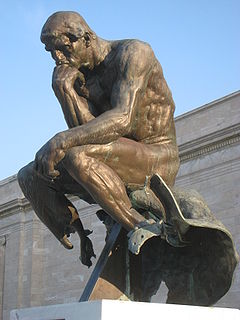 W
WVandalism of art is intentional damage of an artwork. The object, usually exhibited in public, becomes damaged as a result of the act, and remains in place right after the act. This may distinguish it from art destruction and iconoclasm, where it may be wholly destroyed and removed, and art theft, or looting.
 W
WRobert King "Bob" Wittman is a highly decorated former Federal Bureau of Investigation special agent who was assigned to the Philadelphia Field Division from 1988 to 2008. Having trained in art, antiques, jewelry and gem identification, Wittman served as the FBI's "top investigator and coordinator in cases involving art theft and art fraud". During his 20 years with the FBI, Wittman helped recover more than $300 million worth of stolen art and cultural property, resulting in the prosecution and conviction of numerous individuals. In 2005, he was instrumental in the creation of the FBI's rapid deployment Art Crime Team (ACT). He was named the ACT's senior investigator and was responsible for instructing the newly formed team. He also was instrumental in the recovery of colonial North Carolina's copy of the original Bill of Rights in 2005, that had been stolen by a Union soldier in 1865. Wittman represented the United States around the world, conducting investigations and instructing international police and museums in recovery and security techniques. After 20 years with the FBI working against art theft, he worked as an art security consultant for the private sector. In 2010 Wittman published his memoir Priceless which recounts his career and activities while working for the FBI as an undercover agent.
 W
WThe looting of Polish cultural artifacts and industrial infrastructure during World War II was carried out by Nazi Germany and the Soviet Union simultaneously after the invasion of Poland of 1939. A significant portion of Poland's cultural heritage, estimated at about half a million art objects, was plundered by the occupying powers. Catalogued pieces are still occasionally recovered elsewhere in the world and returned to Poland.